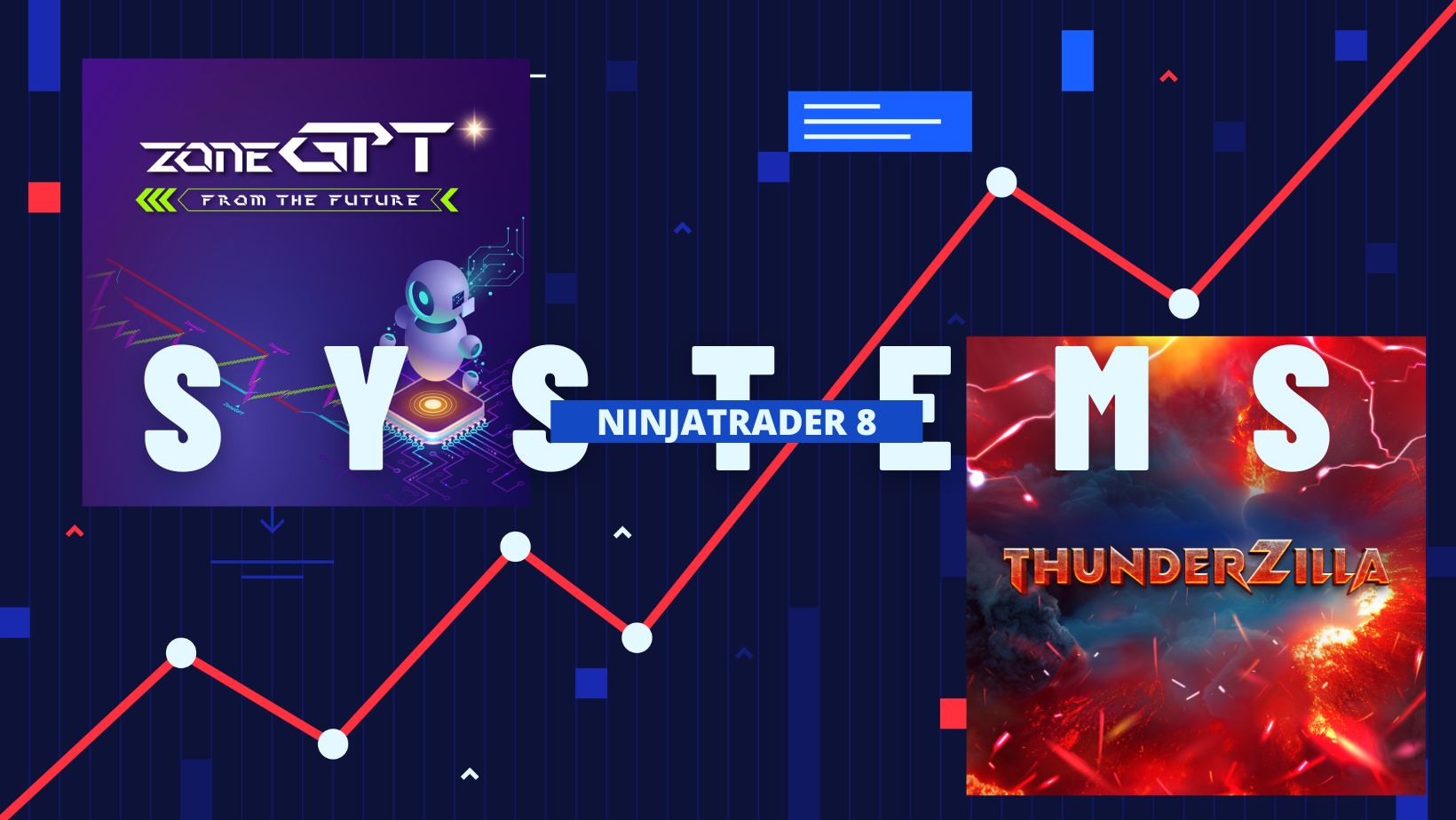Understanding the Power of NinjaTrader Trading System
NinjaTrader Trading Systems are powerful tools that can greatly enhance your trading experience. These systems combine the best NinjaTrader indicators with optimized strategies, allowing you to make more informed trading decisions. By utilizing mining software, and artificial intelligence for e-business, you can start trading quickly and efficiently, without the need for extensive technical analysis. These NT8 Trading strategies provide you with a wide range of entry and exit opportunities, giving you an edge in the market.

Whether you are a beginner or an experienced trader, understanding the power of these systems is crucial. These systems provide you with valuable insights into market trends, price movements, and potential trading opportunities. They help you identify key support and resistance levels, spot trend reversals, determine optimal entry and exit points, and suggest your stop loss. With the power of these indicators, you can make more accurate and profitable trading decisions.
Choosing the Right Trading System for Your Trading Style
Trading could be described as 4 main styles: scalping, day trading, swing trading, and position trading, each distinguished by how long trades are held. Scalping involves very fast trades, typically lasting only a few seconds. Day trading involves completing trades within the same day, usually lasting from seconds to a few hours. Swing trading holds trades for a few days, while position trading can last from days to several years.
Selecting the right trading style is important for long-term success. Here are the key traits associated with each style:
- Scalping: This style requires quick decision-making, as trades are made within seconds. It’s best suited for active traders who can act fast without hesitation. Scalpers often exit trades quickly if they don’t go as expected. Focus and concentration are crucial, making it unsuitable for easily distracted individuals.
- Day Trading: Day traders aim to complete trades within a single day. They need to be disciplined and persistent, as they close out all positions by the end of the day. Day trading demands emotional control to handle fluctuations without succumbing to impulsive decisions.
- Swing Trading: Swing traders hold trades overnight to capitalize on short-term price movements. They need patience and composure to endure market fluctuations. Unlike day traders, they’re comfortable leaving trades unattended overnight.
- Position Trading: This style involves holding trades for extended periods, sometimes for years. It requires patience and confidence in one’s decisions. Position traders must be able to withstand market sentiment and ignore short-term fluctuations.
Sticking to a chosen trading style is important for consistency and long-term success. Constantly switching styles can lead to losses. Once comfortable with a style, it’s best to remain loyal to it.
How to identify a good trading system?
Building a trading system is like putting together a complete picture; you need to know how to arrange the pieces in an orderly and logical manner.
For a trading system too, you need to have a structure of the main elements, find the right fit for the key elements then put them together to create a trading system.
The main elements that make up a trading system are:
- Trend
- Zone
- Signal
Trend
First, you need to know which phase of the market you are trading in: Uptrend, Downtrend, or Sideways. Choosing a market phase to trade in will help you focus more, select signals more carefully, and avoid over-trading, which can lead to a loss of control. Usually, each signal is only suitable for a certain market period.
Zone
Second, you need to define the trading zone, as this is very important. After determining the trend you want to trade, you must locate the area that will give a signal to trade. This will narrow your observation range and help you avoid spending many hours in front of the computer monitoring the market. Sitting in front of a computer for hours can make you tired and more susceptible to falling into the trap of trading psychology. To locate the trading zone, use the Supply-Demand and Support-Resistance zones. These zones will provide trading signals, target points, and stop points.
In a trending market, you need to identify the phase of the trend you will trade.
- Top of the trend
- Trend continuation
- End of trend
Signal
Finally, you wait for the trading signal to appear in the zone. When the signal appears, place the order.
Trading is a journey; you have to be patient to learn and take a firm grasp of Trend-Zone-Signal. However, you can consider a Quickstart trading package that covers all those required factors, and start trading with better ease:
Backtesting and Optimization:
Backtesting and Optimization are important components of strategy development in your trades, allowing you to assess the effectiveness and potential profitability of your strategies using historical data. Here’s why they are significant and how to get a good grasp of them:
The Significance of Backtesting in Strategy Development:
Backtesting enables you to gauge a trading strategy’s performance by simulating it using historical data. It helps in understanding how the strategy would have fared in different market conditions, and identifying its strengths, weaknesses, and areas for improvement. By analyzing metrics like risk-reward ratio, drawdowns, and win rate, you can make informed decisions about implementing the strategy.
Choosing Historical Data for Backtesting:
Selecting the right historical data is critical for accurate results. You should ensure they cover various market conditions and cycles by using a sufficient amount of data. Consideration should be given to different timeframes, market volatility, and significant economic events impacting price action. Using reliable and accurate historical data from reputable sources or platforms is essential to ensure the integrity of the results.
Optimization Techniques for Improving NT8 Trading Strategies:
Optimization involves adjusting a strategy’s parameters to enhance its performance based on historical data. You can systematically test different parameter combinations to find the settings that maximize profitability or other desired metrics. Techniques like parameter sweeps, genetic algorithms, or optimization functions provided by trading platforms can be employed. However, traders should be cautious of over-optimization, which may lead to poor performance in real-time trading.
While conducting backtesting and optimization, it’s crucial to remember that past performance doesn’t guarantee future results. Market conditions can change, and overfitting a strategy to historical data may result in poor performance. Combining backtesting with forward testing and robust risk management techniques is recommended. Regularly reassessing and refining strategies based on real-time market observations can lead to more adaptive and reliable strategies.
You should use good backtesting software to get the most out of historical data, check out Hellowin.io:
Hellowin.io is an outstanding backtesting software that offers smart algorithms and statistical mathematics to produce average price action of the watch period, with ease of use for traders.
Automated systems, what are they?
Although a majority of traders want to use NT8 trading packages which include several indicators, automated trading systems, known as mechanical, algorithmic, or system trading, have gained significant popularity in trading. These auto bots are designed to execute trades automatically without human intervention. Traders can establish specific rules for trade entries and exits based on their trading plans and objectives.
According to recent reports, automated trading accounts for 70% to 80% or more of the shares traded on U.S. stock exchanges.
An automated bot consists of rules that precisely define entry, exit, and money management criteria. This enables computers to execute and monitor trades, effectively removing some of the emotions from trading. Traders and investors favor this strategy.
Basic conditions such as moving average crossovers can serve as triggers for trade entries and exits. More experienced traders may develop more sophisticated strategies requiring deeper knowledge of programming languages on specific trading platforms.

Or you can watch our instruction video on how we create a strategy for our most sought-after indicator – Solar Wind:
If you’re familiar with ATM on NinjaTrader 8, it’s time to use Automated NinjaScript strategies, which can be enabled within an open chart.
Now you have a solid understanding of a potential automated system, leading to potentially lucrative rewards. Wishing you the best of luck in all your trading endeavors!
For a quick start in trading while saving your time and effort, explore our trading systems, which focus on the Trend-Zone-Signal at their core.


![[Package] Sabertooth Tiger Trading [Package] Sabertooth Tiger Trading](https://hellowin.io/wp-content/uploads/Sabertooth-Tiger-Trading-247x247.jpg)
![[Package] King Kong Trading RK [Package] King Kong Trading RK](https://hellowin.io/wp-content/uploads/King-Kong-Trading-RK-247x247.png)
![[Package] King Kong Trading [Package] King Kong Trading](https://hellowin.io/wp-content/uploads/King-Kong-Trading-Square-247x247.png)
![[Package] Lightning Leopard Trading [Package] Lightning Leopard Trading](https://hellowin.io/wp-content/uploads/Lightning-Leopard-Trading-Featured-247x247.jpg)
